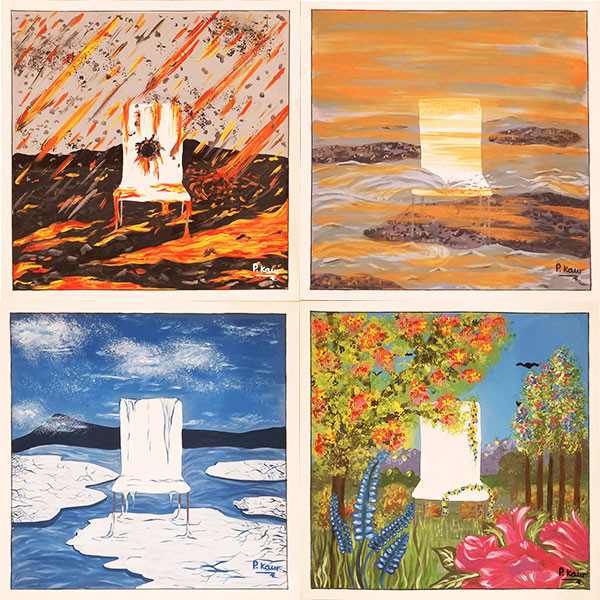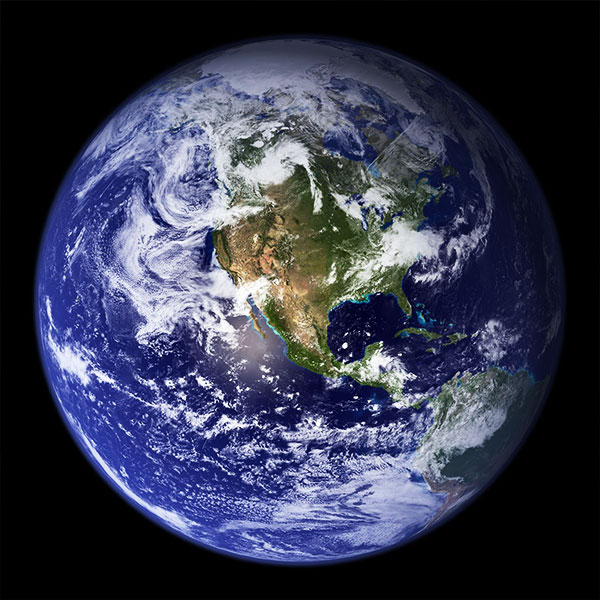
The evolution of Earth is intensely fascinating, with so many eras and epochs. Let’s break down some of the terms before we map out the history with some dates and events. Time on a geological scale is measured in billions, millions and thousands of years. Each period usually has some defining feature, or event that switches from one time period to the next. The biggest measure of time is eons, then eras, then periods, then epochs and then ages.
This time scale has been repeated numerous times across the web, I wanted to join in for my love of timelines and facts. The geological scale is based on the study of rock formations. The dates I have used in my images are an accumulation from various sources, they may vary compared to other scales but the general gist is there.
Hadean Eon

The Hadean eon is the first. Named after Hades, Greek name for the underworld and the God. Disney’s Hercules comes to mind. There are no confirmed sub divisions of eras for this eon but some subdivisions have been suggested.
4.5 billion years ago – the solar system was birthed into being, the Earth was being formed from things roaming around in a solar nebula, through the process of accretion. Objects crashing into each other was common back then.
50 million years later – a Mars-sized object bumped into the proto-Earth (early Earth), caused a bit of havoc and eventually lead to the Earth and Moon settling into their own orbits with each other.
This eon is all about a hot and dramatic world, terrible weather and constant bombardment from other objects flying around in space.
Archean Eon

Now things start to get interesting. We have eras in the Archean eon but sadly no defined periods. The Archean eon is named after the Greek work for ‘origin’. Its all about the beginning of things, life, the crust, potentially a super continent.
4 billion years ago – the earth began to cool. Continental crust could begin to form.
3.6 – 2.7 billion years ago – possible formation of first super continent Vaalbara.
3.5 billion years ago – cyanobacteria began to evolve. This bacteria was the first organism to photosynthesize. Remember it, it’s important a bit later on.
3.2 billion years ago – in the Mesoarchean era, plate subduction began (to do with the development of plate tectonics) and microbial life began to expand in the oceans.
2.8 billion years ago – in the Neoarchean era, the oxygen levels in the atmosphere began to rise. The atmosphere was mostly carbon dioxide and nitrogen at this time. The oxygen rise was caused by those cyanobacteria, who photosynthesise – the waste product being free oxygen.
2.7 billion years ago – super continent Kenorland was formed.
Proterozoic Eon

We come to the third eon, Proterozoic, the longest one. We have eras and periods in this eon as illustrated above. More things are happening so the sub divisions are necessary to divide these chunks of time to coincide with certain events.
2.5 – 2.2 billion years ago – period of ice ages began, Huronian glaciation. Lasted for 80% of the Rhyacian period.
2.5 – 1.5 billion years ago – super continent Nuna or Columbia was thought to have existed.
2.4 – 2 billion years ago – The Great Oxidation Event. Not officially recognised as a mass extinction, but it was bad enough to note. As those cyanobacteria, from the previous Eon, evolved in greater numbers and released more oxygen into the atmosphere, it killed the already existent anaerobic organisms (for which oxygen is poisonous) that were around. But it did give way for more photosynthesising organisms to develop in this oxygenated atmosphere. It finished during the Rhyacian period, 2.3 – 2.05 billion years ago.
2.1 billion years ago – continent-continent collisions started occurring causing mountain building events.
1.8 – 0.8 billion years ago – the Boring Billion. A period of stability where apparently not much happened, not true, plenty was happening. Eukaryotes, a type of organism, may have evolved at the beginning of this period, which diversified into plants, fungi and animals by the end of this period.
1.2 billion years ago – evidence found of sexual reproduction within eukaryotes.
1.2 billion years ago – the super content Rodinia began to form in the Stenian period. Later to break up in the Tonian period, 1 billion years – 720 million years ago.
890 – 800 million years ago – first sponge like animal organism.
717 million years ago – Sturtian glaciation event. For 70 million years, the Earth experienced repeated large scale glaciations resulting in a Snowball Earth.
659 – 645 million years ago – bacterial dominance in the seas transitioned to eukaryote dominance, which leads the way to the start of animals.
650 million years ago – another glaciation event called Marinoan glaciation.
635 million years ago. Beginning of the Ediacaran period, the newest period to be recognised in over 100 years. Earliest known multicellular organisms to evolve in this period known as Ediacarn fauna. Super continent Pannotia came together in this period.
579 million years ago – the Gaskiers glaciation event.
560 million years ago – super continent Pannotia broke apart.
550 million years ago – super continent Gondwana began to form.
547 million years ago – the Baykonurian glaciation event.
541 – 539 million years ago – the last known existence of the Ediacara fauna. This indicates an extinction event to make way for new organisms. The source of this extinction event are unconfirmed.
Phanerozoic Eon

We enter our current eon. The name means ‘visible life’. It is the eon of complex organisms, major diversity, mass extinctions, and us. This eon is filled with many periods, epochs and ages. I didn’t fit them all into my image above, but there are resources online that break down time into more minute chunks.
535 – 525 million years ago – a number of different species evolved with new body plans still used by some species today. Hard shelled organisms developed as the evolution of the predator began. Organisms began to eat other organisms rather than absorb nutrients through their soft bodies. Prey had to evolve to protect themselves. Predators evolved to capture prey better.
521 million years ago – trilobites evolved, one of the most successful early animals. The species survived for 270 million years in the oceans.
513 – 509 million years ago – late early Cambrian extinctions. Between 50 – 80% of marine species went extinct.
470 million years ago – plants species went onto land for the first time.
460 – 420 million years ago – Hirnantian glaciation event.
443 million years ago – the first official mass extinction event. Nearly 85% of marine species became extinct.
433 to 420 million years ago – there were three minor extinction events in the Silurian period, 413 – 499 million years ago.
419 – 358 million years ago – the Devonian period saw diversity of fish and primitive sharks, sometimes dubbed the age of fish.
370 million years ago – forests were growing richly into the carboniferous period. There was of course no animals to eat them at this time.
359 million years ago – the second mass extinction event. 75% of species became extinction.
335 million years ago – super continent Pangaea started to form.
320 million years ago – the late Carboniferous period, the age of amphibians.
305 million years ago – carboniferous rainforest collapse.
300 million years ago – mammals began to evolve, diverging from reptiles and birds.
252 million years ago – third mass extinction event. 96% of species became extinction. Known as the Great Dying. It took 30 million years for life to recover.
245 – 233 million years ago – dinosaurs first appeared
200 million years ago – the fourth mass extinction event. A slow event which ended in half of the species becoming extinct.
200 million years ago – Pangaea started to break up into Laurasia and Gondwana.
134 million years ago – flowering plants developed.
66 million years ago – the fifth mass extinction event. 80% of species went extinct.
60 million years ago – mammals diversified rapidly after the fifth mass extinction event.
23 million years ago – during the Miocene epoch, climates were progressively cooling.
10 million years ago – human and gorilla lines split.
7 million years ago – bipedalism evolved in hominines.
6 million years ago – the ice caps began to expand.
4.2 million years ago – australopethecines evolved.
2.5 million years ago – the earth entered the latest series of ice ages that is still ongoing.
2.3 million years ago – homo habilis evolved.
2 million years ago – homo erectus evolved
300,000 thousand years ago – homo sapiens emerged out of Africa.
130,000 years ago – homo sapiens began migrating out of Africa.
40,000 years ago – cave paintings by homo sapiens.
21,000 years ago – peak of the last ice age.
12,900 years ago – younger dryas, a short return of under 1000 years to glacial conditions.
11,500 years ago, agriculture began in its infancy.
10,000 years ago – farm animals were domesticated.
5,200 years ago – 3300 BCE- first forms of writing, cuneiform.
5,000 years ago – 3100 BCE – first city of Uruk in Mesopotamia.
2334 BCE – the Akkadian Empire was birthed, one of the first empires.
1279 BCE – Pharaoh Rameses II took the throne, one of most prosperous times of Ancient Egypt.
1027 BCE – Zhou Dynasty in China, a time of prosperity.
428 BCE – Plato was born.
400 BCE – Buddhism was founded.
356 BCE – Alexander the Great was born.
51 BCE – Cleopatra VII ruled, the famous Queen of Egypt from the Ptolomeic dynasty.
395 – 476 CE – Western Roman Empire.
1346 – 1353 – Black Death, bubonic plague pandemic.
1452 CE – Leonardo da Vinci was born.
1600 – 1700 CE – Age of Enlightenment.
1789 – George Washington, first president of United States.
1945 – atomic bomb dropped in Hiroshima.
1990 – the World Wide Web went live.
2008 – financial crisis.
2020 – covid 19.
And here we are today. In 2023. 8 billion humans. At the end of an interglacial period. Driving species to extinction. Increasing global warming with our activity.
But as we have seen, life will thrive even after being brought to near all life extinction. Give it a few million years or so.






Everything is very open with a very clear description of the challenges. It was definitely informative. Your site is very useful. Thanks for sharing!
I wanted to thank you for this wonderful read!! I definitely loved every bit of it. I have got you bookmarked to look at new stuff you postÖ